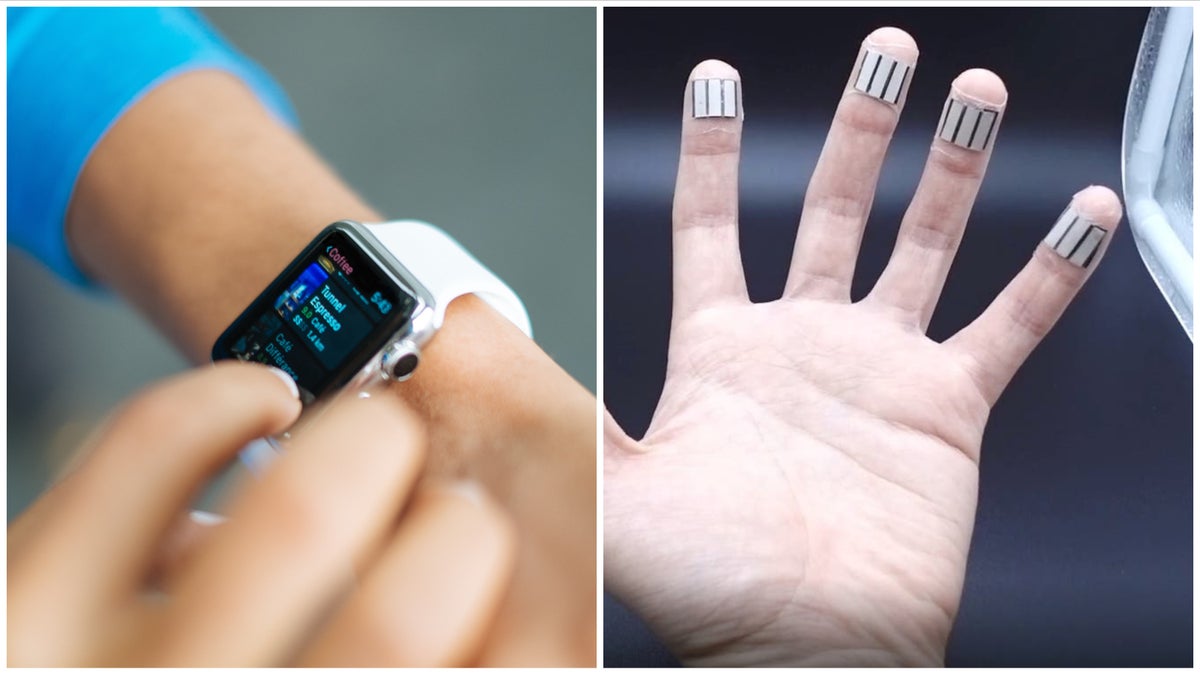Video: Breakthrough tech uses sweat to charge wearables

Alright, alright, alright! This is not how I imagined it'd start the day, but here we go...
You might have heard of biofuels in the context of transportation. That's usually ethanol or biomass-based diesel. They are often blended with gasoline and diesel fuel and heating oil, but they can also be used on their own. The whole idea behind them is reducing the consumption of pure gasoline and diesel fuel made from crude oil, which aren't as clean.
As it turns out, the scientists at the University of California, San Diego, are focusing on a slightly different form of biofuels. They have engineered a thin, flexible strip that sits on your fingertips. What does it do? Apparently, the novel bioenergy harvester continuously scavenges energy from human passive sweat to... charge wearables!
The development of of the so-called "biofuel cell bioenergy harvesters" can:
- Use human sweat to generate energy
- Be more efficient than previously discovered tech
- Continuously harvest energy while you are sleeping - without any activity
- Power devices with dedicated displays and processors
The developed biofuel cell can generate ∼400 mJ/cm2 energy over 10 hours (during sleep) and can be used to power devices used for environmental monitoring or personal wellness, but also simply wearable electronics.
The more intriguing part is that the above-mentioned data is based on "sleeping" or inactive state. To make the most out of the devices, the engineers have installed additional piezoelectric generators under the biofuel cell to further push the generating of mechanical energy from finger presses.
“We envision that this can be used in any daily activity involving touch, things that a person would normally do anything while at work, at home, while watching TV or eating,
Joseph Wang, professor of nanoengineering at the UC San Diego Jacobs School of Engineering
Theoretically, this means one could be charging their wearables while typing on your phone, gaming, playing the piano, playing the djembe, or even a number of other things which the editor wouldn't allow me to mention... Basically, the practical implications can be further boosted if you sweat... more. So, the harvesters would truly shine in places with higher temperatures.
Even then, is this realistic? No. It would take about 10,000 hours to charge one AirPod (not both!), and that's if the tech is 100% effective. The biocompatible energy-harvesting technology has great potential for establishing self-sustainable, reliable, and independent next-generation epidermal electronics systems for tracking healthcare and wellness. However, it would need some real magic to be sufficient enough to charge more power-hungry devices.
In case you though: "But how would I wear it?". Of course, you won't be wearing the sensors on your fingers like a walking human experiment. The eventual goal is to integrate the tech into things like gloves.
“We want to make this device more tightly integrated in wearable forms, like gloves... We’re also exploring the possibility of enabling wireless connection to mobile devices for extended continuous sensing. There’s a lot of exciting potential.”
The scientists' aim is that the wearable device will feel natural enough so you don't have to think about it. It's a very Apple-like idea, which is why it might be of interest to the Cupertino-based company.
Companies like Apple, Samsung, and Huawei have a strong focus on consumer wearables which let the users monitor their health. Clearly, the investment in this sector is only going to grow, since society is becoming more obsessed with smart devices, and in the same time with tracking personal wellness.
Would this newly-developed technology be enough to charge a smartphone? Perhaps - if you are very active, and you... press things?! The fingertip positioning isn't a coincidence. It's said that fingertips have the highest concentration of sweat glands compared to any other part of the human body.
Mind you - not the sweatiest part of your body, but the one with the highest concentration of sweat-generating sweat glands. We all know which the sweatiest parts of the body are. They probably won't be the most practical place to keep any kind of tech...
In conclusion - in case you didn't realize - this is a truly breakthrough discovery, which has the potential to change the way we use our smart devices forever! Now, will it do it? We have to wait and find out.
Meanwhile, why don't you start practicing on the djembe? Well, probably after you Google it to see what it looks like...
Follow us on Google News














Things that are NOT allowed:
To help keep our community safe and free from spam, we apply temporary limits to newly created accounts: